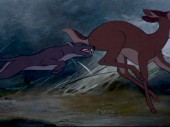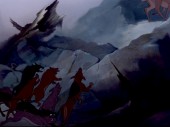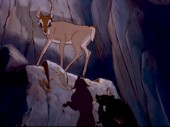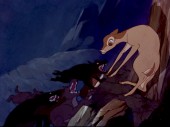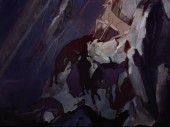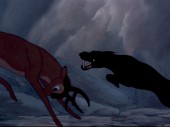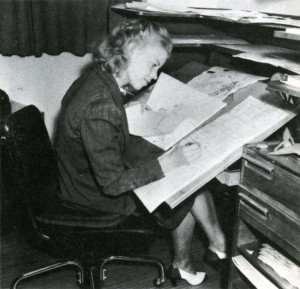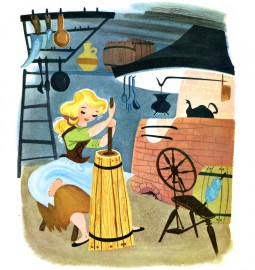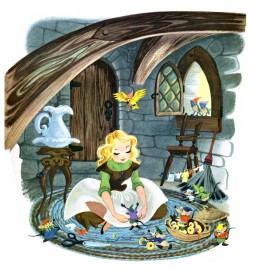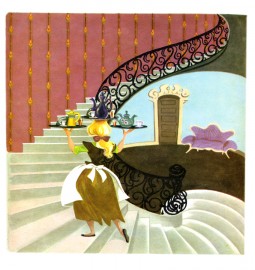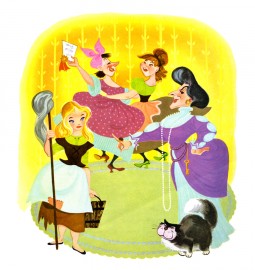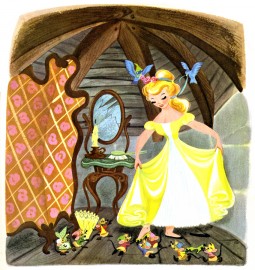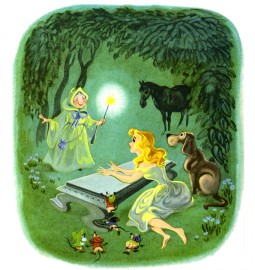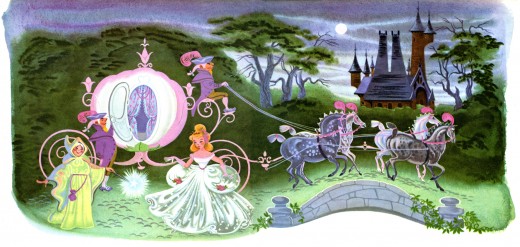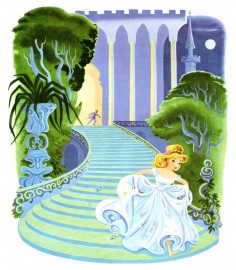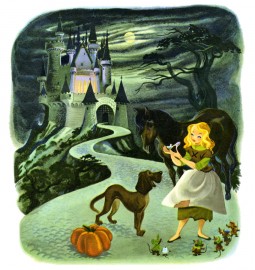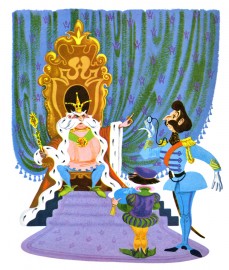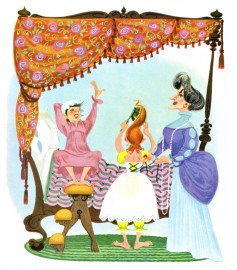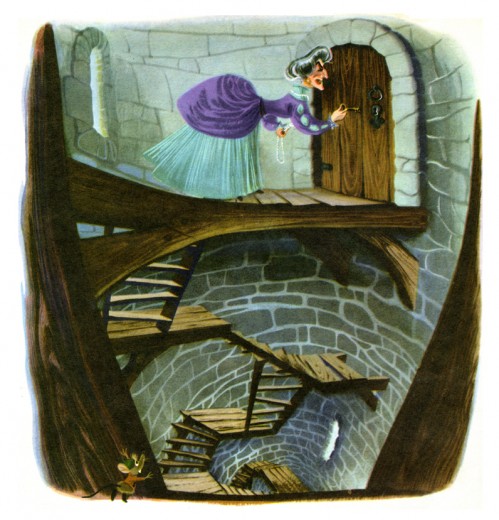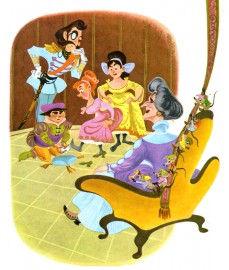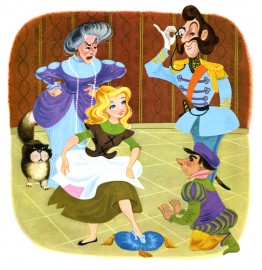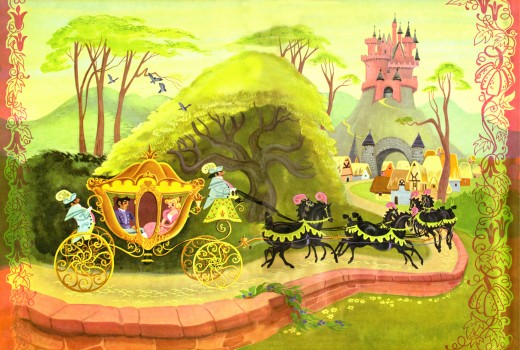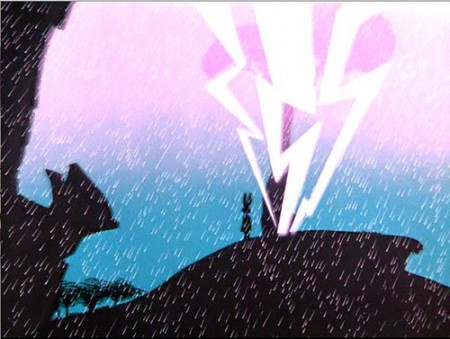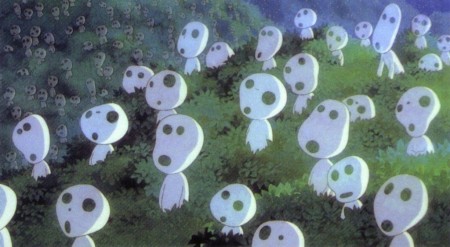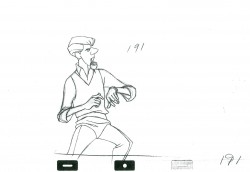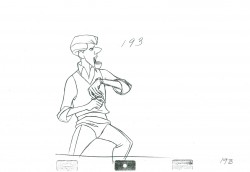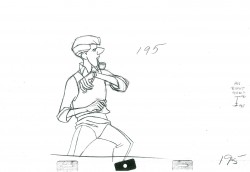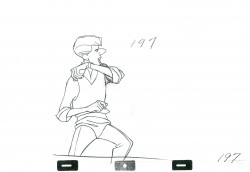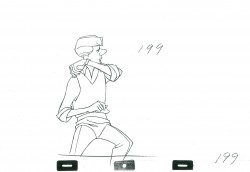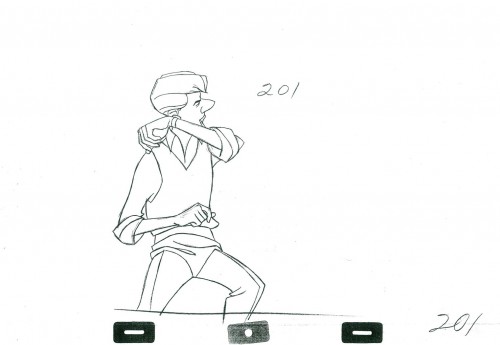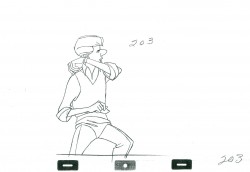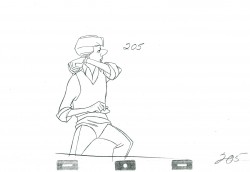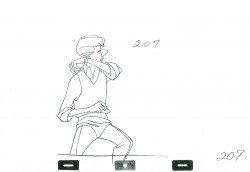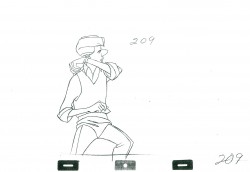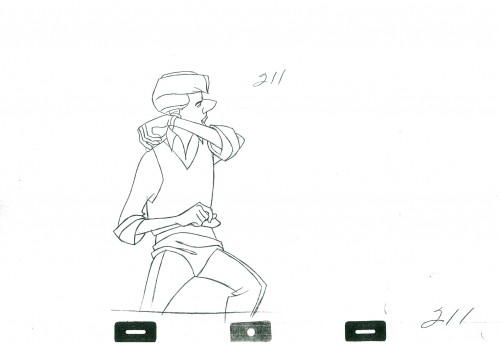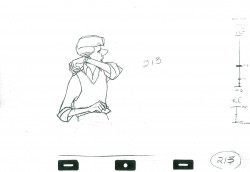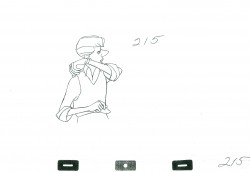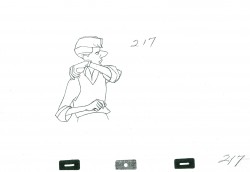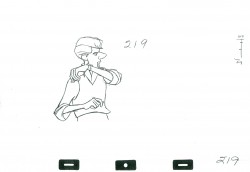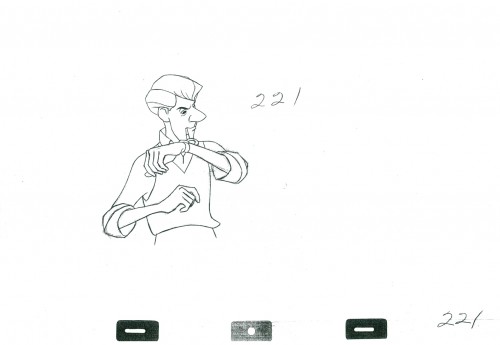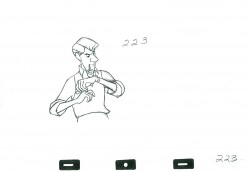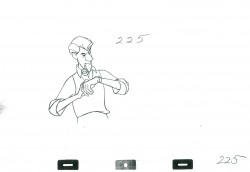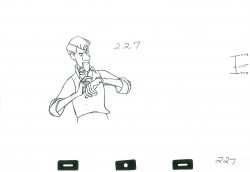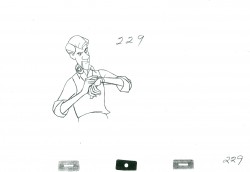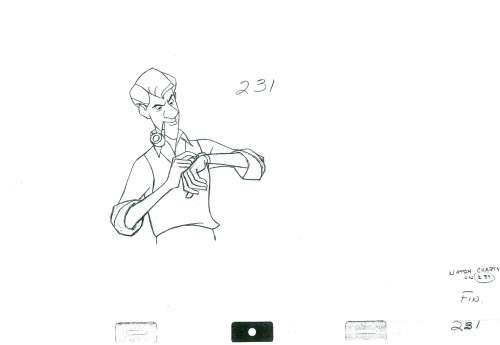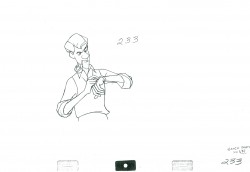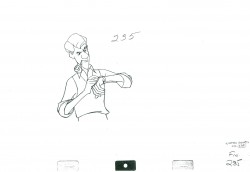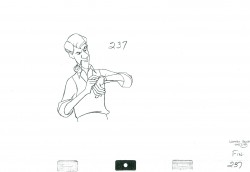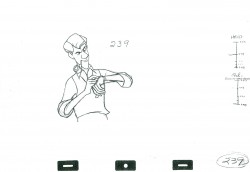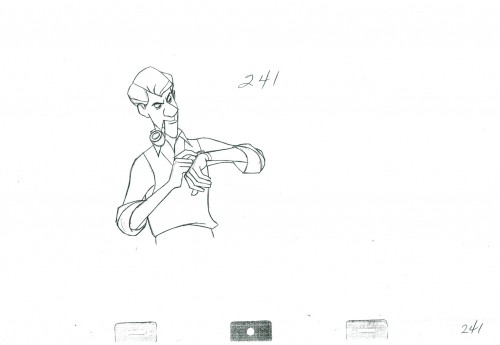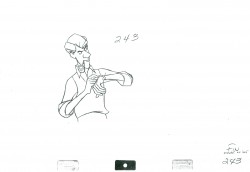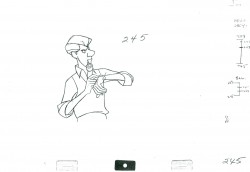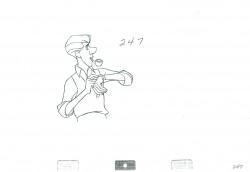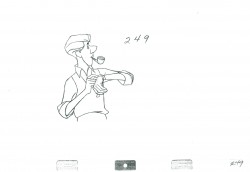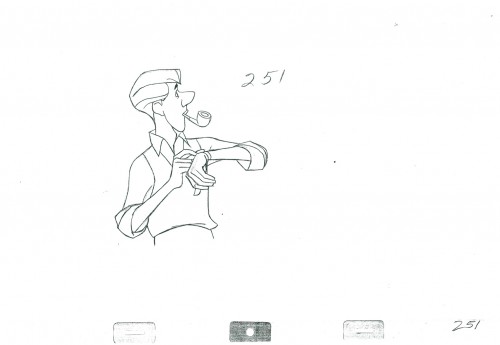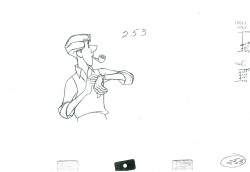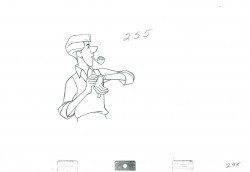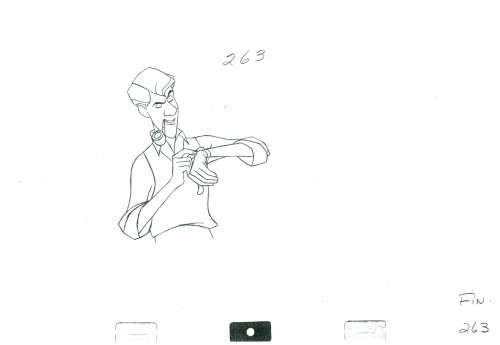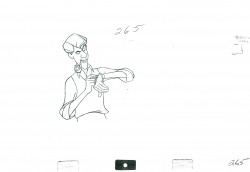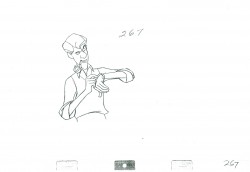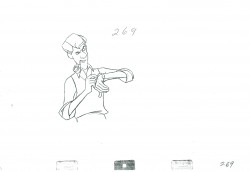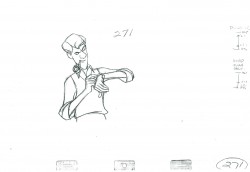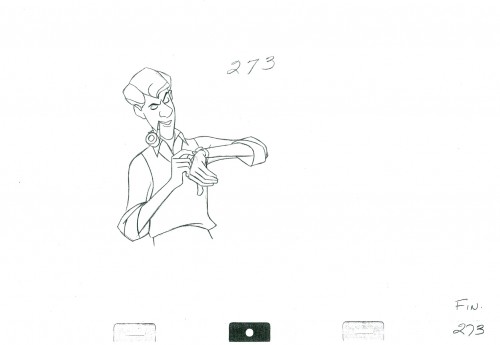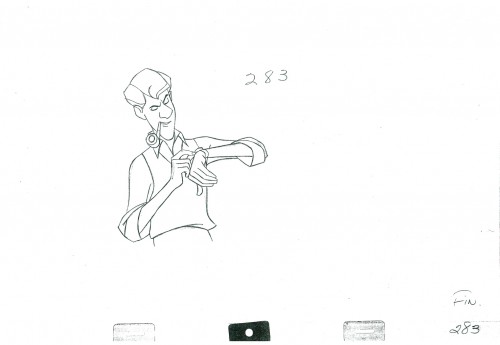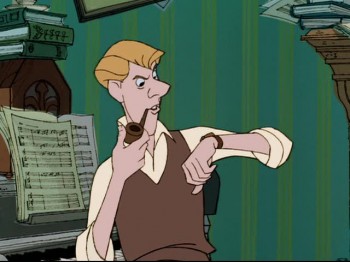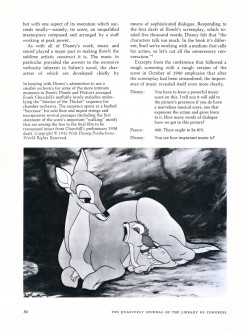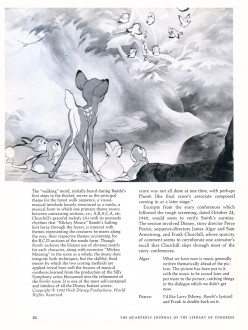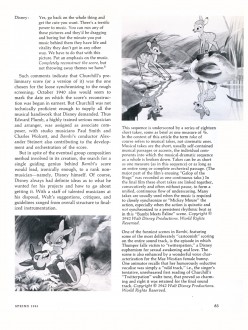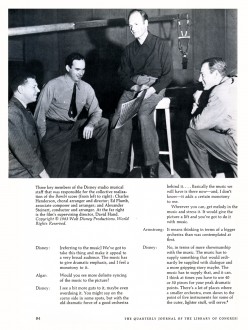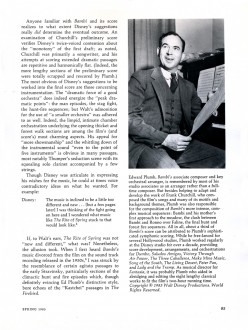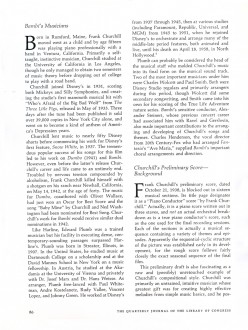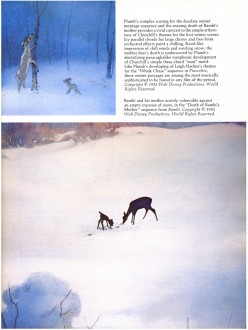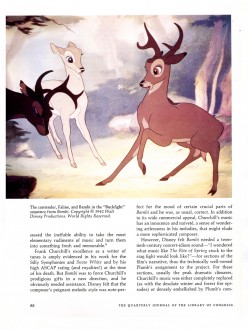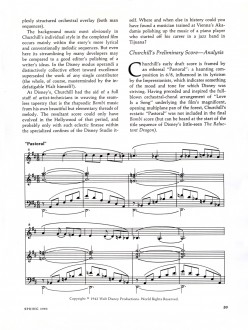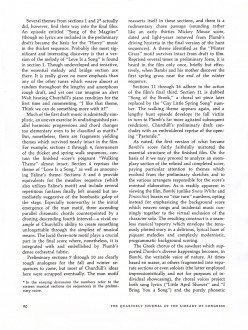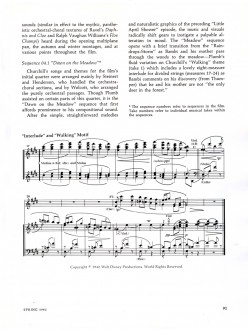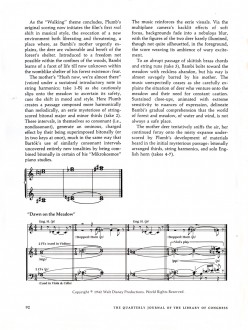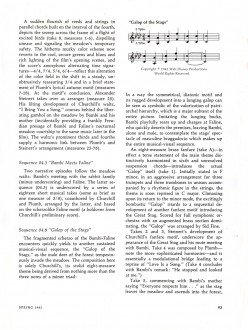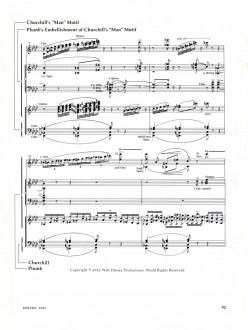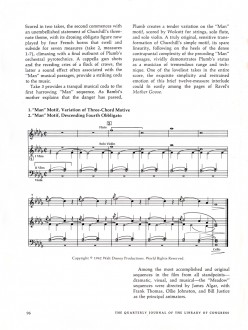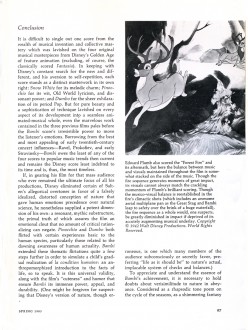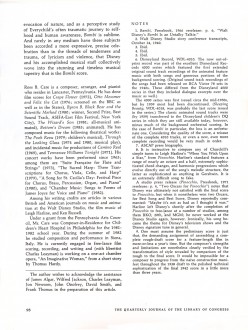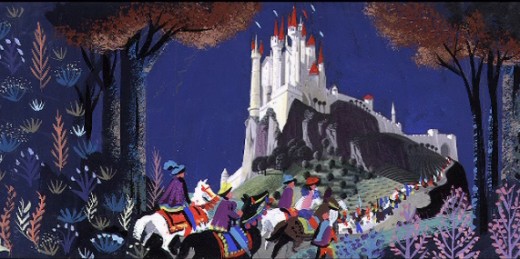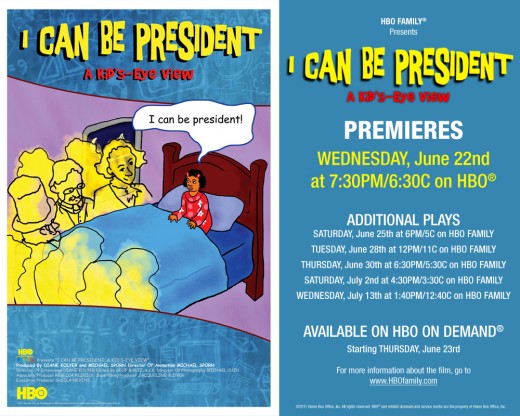Search ResultsFor "bambi"
Books &Disney &Illustration 31 May 2012 06:14 am
Retta Scott’s Cinderella
– Retta Scott‘s name was always an intriguing one for me.
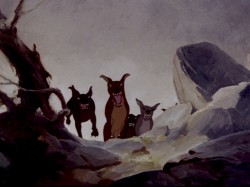 She was an animator on Bambi, Dumbo and Plague Dogs. She was layed off at Disney’s when they hit a slump in 1941 but came back to do a number of Golden Books for Disney. The most famous of her books was her version of Cinderella, one which was so successful that it remains in print today as a Little Golden Book.
She was an animator on Bambi, Dumbo and Plague Dogs. She was layed off at Disney’s when they hit a slump in 1941 but came back to do a number of Golden Books for Disney. The most famous of her books was her version of Cinderella, one which was so successful that it remains in print today as a Little Golden Book.
When asked why females weren’t animators at the studio, the Nine Old Men who traveled the circuit, back in the 1970′s, often mentioned her. They usually also said that she was one of the most forceful artists at the studio, but her timing always needed some help (meaning from a man.)
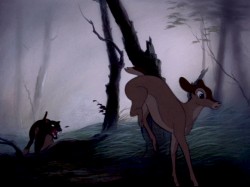 Ms. Scott was known predominantly for her animation in Bambi. Specifically, she’s credited with the sequence where the hunter’s dogs chase Faline to the cliff wall, and Bambi is forced to fight them off.
Ms. Scott was known predominantly for her animation in Bambi. Specifically, she’s credited with the sequence where the hunter’s dogs chase Faline to the cliff wall, and Bambi is forced to fight them off.
The scene is beautifully staged and, indeed, is forceful in its violent, yet smooth, movement. I was a young student of animation, at the time, so this sequence has always had a long and lasting impression on me.
.
,
I’m curious to know how Western Publishing proceeded with the illustrated Disney books. Apparently a large number of Disney artists contributed to the books – at least in the 40′s & 50′s. Bill Justice, Dick Kelsey, Mary Blair, et al. Then, of course, there are the Golden Books that didn’t have a Disney connection by Disney artists. The Poky Little Puppy by Gustaf Tenggren is, of course, the most famous of these.
(Retta Scott working on Pastoral seq. from Fantasia. From The Art of Walt Disney by Finch.)
Here are some of her illustrations for Cinderella published in 1950 to tie in with the Disney film. Oddly, the illustrations don’t completely look like the film’s characters. The cat and mice are close, but Cinderella, herself, is very different, less realistic. She looks more like a Mary Blair creation. When I was young, I was convinced that these were preproduction illustrations done for the film. If only.
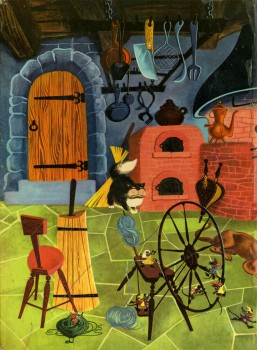
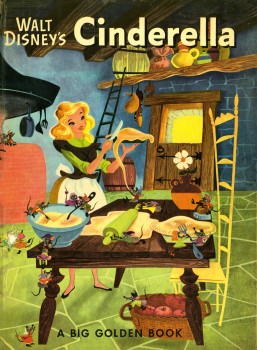
Commentary 08 Apr 2012 07:02 am
Moving On
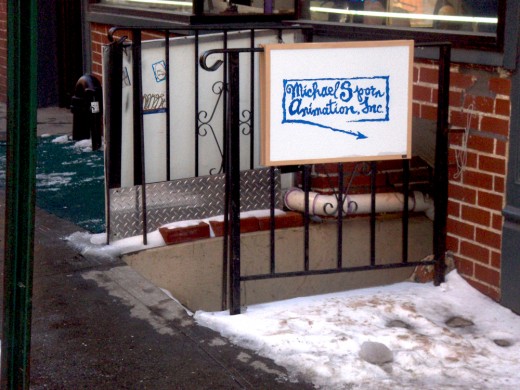 - It’s a week later, and the move out of the Bedford Street studio is done. Most of the furniture, artwork and computers have been put in storage. It was a big decision to have made and done quickly and expeditiously. It was also a touch traumatic. Giving up the space wasn’t easy. I’d been thinking of doing it for the past year, and the inevitable had to happen. I realized that only a couple of weeks ago.
- It’s a week later, and the move out of the Bedford Street studio is done. Most of the furniture, artwork and computers have been put in storage. It was a big decision to have made and done quickly and expeditiously. It was also a touch traumatic. Giving up the space wasn’t easy. I’d been thinking of doing it for the past year, and the inevitable had to happen. I realized that only a couple of weeks ago.
So now I’m working out of my home and will also be occupying a desk alongside Candy Kugel at her company Buzzco; she’s given me access to her facilities. That will get me out of my house and make my days a bit more interesting. Lest there be any doubt, Michael Sporn Animation, Inc. still exists, and in fact we’re currently working on a spot for AARP with Bob Blechman. That’ll be done in the next week. Matt Clinton is doing his part out of Michigan, while I work in the City.
A couple of big thank you’s for the move have to go out to two great friends. The move could not have happened without the back breaking work of Stephen MacQuignon. What a guy he is; I just can’t say enough about him. Bridget Thorne was also essential in getting it going and boxing up so many damn books. She was the vision behind the move. Of course, Heidi Stallings, my wife, was there all the way with me making sure I didn’t push too hard. Thank you to all three of them.
- I’m haven’t surrendered to Kickstarter after not reaching the enormously high goal I’d set for myself. I’m hoping to start anew in the next week or so, but this time I’ll be using Indiegogo. It seems much more reasonable in the way they’re set up. Of course, I’ll reach out and let you know when I’ve got it going. I want to get started on POE‘s opening and have been working by myself, for now, on that. Any moneys I can generate through such a device would be glorious.
- Gene Deitch on his site, gene deitch credits, has an absolutely great piece about Morton Schindel. Schindel was the smart entrepreneur who set up Weston Woods in the 1950s, and he deserves more attention in the business. His company has thrived for more than fifty years doing quiet films based on well-known children’s books. Deitch got a firm foothold of a customer with Weston Woods, and I got my real start as a studio with a couple of films from the Schindel, and the guy who actually runs the production now, Paul Gagne.
I knew that the early WW films were shown on Captain Kangaroo, but I wasn’t aware that Gene Deitch was responsible for that happening. It’s a good little piece of history worth reading.
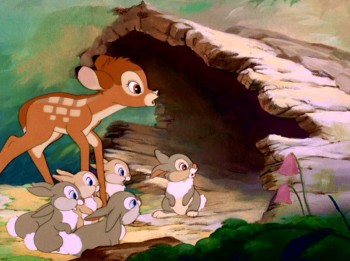 -With the recent introduction of their new cable channel, Disney Junior, Disney has been screening a number of the early animated features on the channel. I happened to catch Bambi yesterday. Of course, it’d have been easy for me to just put in the DVD, but somehow accidentally coming upon the film makes it hard to pass up. Considering how immersed I’ve been in the UPA films and the Miyazaki canon, it always brings you back to ground zero when you see one of these early Disney masterpieces. They can’t be beat. Bambi, in particular challenges any notions of modern art with Tyrus Wong‘s stunning Backgrounds and design. The Bgs turn almost abstract at times. When the deer on the meadow are running away, for fear of man, the animals turn wildly brilliant colors. It caught my eye the first time I saw the film, as a child, and I still look for it.
-With the recent introduction of their new cable channel, Disney Junior, Disney has been screening a number of the early animated features on the channel. I happened to catch Bambi yesterday. Of course, it’d have been easy for me to just put in the DVD, but somehow accidentally coming upon the film makes it hard to pass up. Considering how immersed I’ve been in the UPA films and the Miyazaki canon, it always brings you back to ground zero when you see one of these early Disney masterpieces. They can’t be beat. Bambi, in particular challenges any notions of modern art with Tyrus Wong‘s stunning Backgrounds and design. The Bgs turn almost abstract at times. When the deer on the meadow are running away, for fear of man, the animals turn wildly brilliant colors. It caught my eye the first time I saw the film, as a child, and I still look for it.
The beauty of some of the animation cannot be challenged, and the airbrushed coloring is stunning. Looking at some of the simple and direct multiplane setups one can only sit in awe. There’s a bit of randomness that has to take over with the multiplane camera, and that brings a touch of life to these camera moves. A good example is the very last scene of the “April Showers” sequence with the camera making a very slight move down and a pull out to reveal Bambi and his mother in the larger forest. The out of focus elements shift to in-focus, and it’s beatuiful. Even watching this film with the advanced use of the computer to composite such films today, the production work can’t be beaten or matched.
We’ll never see the likes of the pre-1942 films again. Snow White, Pinocchio, Bambi, Fantasia and even Dumbo are in a class of their own and will never be matched again. And here they are running on Disney Junior, the toddler’s channel. It’s always good to go back to these films to get a good sense of animation-history reality.
Animation &Commentary 17 Mar 2012 05:52 am
Some thoughts, some opinions
- I saw Andrew Stanton‘s film John Carter this past Tuesday. Actually, I saw part of the film; I walked out after about 80 minutes. It was unwatchable in my book. Hundreds of computer created alien creatures with long necks and horns on their heads, and they all looked alike even though they were supposed to have personalities, I think.
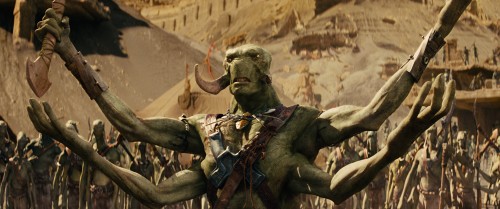
Meanwhile, John Carter is bounding miles around the Martian desert jumping all over the place for no particular reason. Creatures are shooting weapons at . . . oh who cares!
The film’s like a video game, completely without wit or any real intellect. It’s tedious beyond belief and a total waste of time. Go at your own risk. I don’t think it was worth the money it cost to make; Pixar could have made Finding Nemo 2 & 3 for the price. (By the way, Mars Needs Moms wasn’t good, but it was MUCH better than John Carter.) But I guess my opinion on this is really superfluous, and I’m not sure why I wrote anything about it.
What’s Opera Doc?
- Now onto a good film. William Benzon has an extraordinary article about
Chuck Jones‘ What’s Opera Doc? on his website,
The New Savannah. Plentifully illustrated he writes an
in depth article about the short, and it’s well worth the visit
for his commentary.
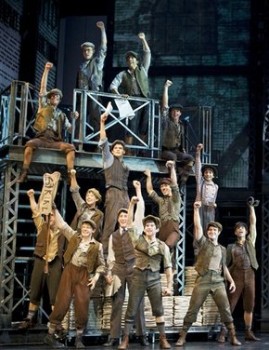 - On Wednesday I got to see a dress rehearsal of the new Disney theatrical Broadway presentation, Newsies. This is a brand new show adapted from the Disney movie of 1992 that starred Christian Bale and Robert Duvall. Alan Menken wrote songs for the film, and he’s rewritten songs for the show. Harvey Fierstein has written the book for the Broadway musical, and it’s set to open on March 29th.
- On Wednesday I got to see a dress rehearsal of the new Disney theatrical Broadway presentation, Newsies. This is a brand new show adapted from the Disney movie of 1992 that starred Christian Bale and Robert Duvall. Alan Menken wrote songs for the film, and he’s rewritten songs for the show. Harvey Fierstein has written the book for the Broadway musical, and it’s set to open on March 29th.
The show talks about the child labor laws in the early part of the 20th century and the organizing of a u-nion of the newspaper sales force to protect them from the likes of the major industries seeking to make bucks off their backs. (Needless to say, this is a show for our times, as the super conservatives try to destroy collective bargaining thus destroy labor laws and u-nion representation.)
The show is full of rousing musical numbers, intense power dancing choreographed by a brilliant Christopher Gatelli and superb direction by Jeff Calhoun. It’s amazing with such a large and constantly moving cast, that Mr. Calhoun is able to keep the sight lines so beautifully clear. Excellent work. The cast does not include major stars, and that’s wonderful – almost like something new on Broadway. Jeremy Jordan, who leads the pack of “Newsies,” is obviously going to be a star.
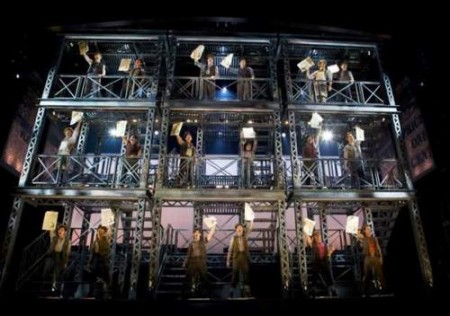
Great use of space for a large cast.
The set design was by Tobin Ost, and it’s basically steel girder like objects that move around the stage forming and reforming different constructs that serve many purposes. It reminded me (very marginally) of the brilliant set to Company by Boris Aronson back in 1970.
There seems to be a bit of work to go in finalizing the show (I would have liked to have seen more intimate moments – especially in the dance work), but it really is all there. A fierce piece from Disney, that I hope does well. It’s supposedly set for a limited run, but I think that’s questionable. It’ll run for a long time – a crowd pleaser.
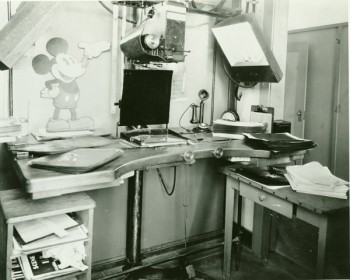 - I love a post that’s been placed by Hans Perk on his great site, A Film LA. It’s a real breakdown of the original Disney Hyperion Studio. Hans gives maps and directions to where this historic studio stood, and then proceeds to map out the entire studio giving us charts, photos and background information where everything stood.
- I love a post that’s been placed by Hans Perk on his great site, A Film LA. It’s a real breakdown of the original Disney Hyperion Studio. Hans gives maps and directions to where this historic studio stood, and then proceeds to map out the entire studio giving us charts, photos and background information where everything stood.
I’m not sure we even have this with the main studio lot anymore. It was the Hyperion studio where the Disney brothers grew and outgrew themselves, producing all those great Mickeys and Silly Symphonies and Snow White and a lot of the preliminary work on Bambi.
I’m always taken aback by the meticulous detail that Hans provides for us over and over in all these incredible posts on his site.
- In the recent days I’ve been just about all consumed with the Miyazaki canon of films. I spent an enormous amount of time reviewing, watching, scouring Spirited Away and have really been taken with the film, the animation, the direction, the story.
This led me to watch some of the earlier films to see where the film came from. Kiki’s Delivery Service wasn’t much help, though it was good to see where he came from. However, I have been a fan of Princess Mononoke and watching that again gives me a lot of ideas and thoughts. The animation for that film is somewhat limited, but the use of well drawn crowd scenes and maneuvers really is enlightening. Watching some of the natural woodland planning, backgrounds and direction is quite special, and I have to admit a certain awe with how he pulled it out of the film with such seeming effortlessnessand beauty.
I like to think that this is all going into my recent concentration of my POE film, and I’m sure it is. I have so many thoughts about that one. It’s a project that’s pushing me forward like I can’t tell you, and the only inspiration I seem to be getting is from these Miyazaki films. I know the financial direction the film’s going to have to take to get done (next to no money), but I’m determined, and I’m hoping some deal arrangement can be made very soon.
The Kickstarter campaign is the juice for the whole thing, and I can’t tell you how important that’s been for me. I’m trying desperately to get a couple of heavy hitters to get that money realized, but nothing yet. Your support has been enormous and enormously helpful.
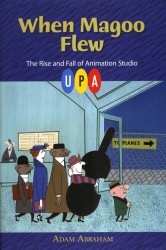 Anyway, back to Miyazaki. I have been watching the films of this master, but my tide is turning a bit. I received the new UPA book, When Magoo Flew by Adam Abraham, and have been reading that. Of course, it’ll lead to the shorts when that new DVD package reaches me – hopefully soon. The Jolly Frolics collection.
Anyway, back to Miyazaki. I have been watching the films of this master, but my tide is turning a bit. I received the new UPA book, When Magoo Flew by Adam Abraham, and have been reading that. Of course, it’ll lead to the shorts when that new DVD package reaches me – hopefully soon. The Jolly Frolics collection.
When I’ve finished reading it, I’ll write a review, and let me tell you it’s a fast read for me even though I’m trying to take my time. There’s a lot of solid research in there with a lot of strong details. It spends quite a bit of time talking about the politics of the time and studio.
However, once into it, I’m hoping for a bit more lyricism in the writing as a way of capturing the inspiration from the work they did on some of those gorgeous films. Perhaps I’ll only be able to get that from watching the films.
However, I still haven’t left the Miyazaki films, and I will write something probably too long when I get into it. The guy has my head twirling, I have to tell you, and it’s a bit hard for me to turn around and think about UPA with the material I’ve been getting from the Japanese contingent. I also want to watch 101 Dalmatians a little closer. I have seen the opening about half a dozen times in the last couple of weeks.
Animation &Animation Artifacts &Disney 08 Feb 2012 07:24 am
Roger – Scene 45 – part 3
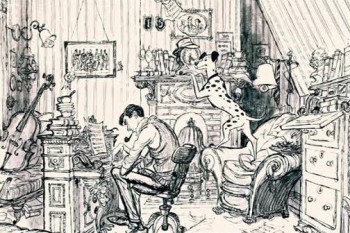 - Here is the final part of Scene 45 from 101 Dalmatians as animated by Milt Kahl. When this scene was loaned to me, it took less than a mezzo second for me to recognize it. I love it and have studied it frame-by-frame off the video (first a VHS then the DVD) many times. It’s a seminal scene for me. Just gorgeous.
- Here is the final part of Scene 45 from 101 Dalmatians as animated by Milt Kahl. When this scene was loaned to me, it took less than a mezzo second for me to recognize it. I love it and have studied it frame-by-frame off the video (first a VHS then the DVD) many times. It’s a seminal scene for me. Just gorgeous.
I’ve always loved the first fifteen to twenty minutes of Disney features (at least up
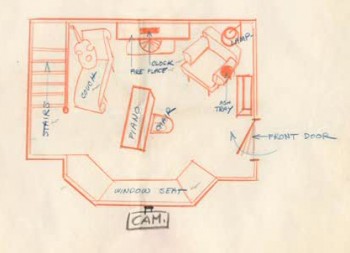 through Sword in the Stone.) Their intelligent introductions of principal characters usually comes in those first few minutes, and it’s always done with class. I think of Pinocchio, Gepetto, and Jiminy Cricket or Dumbo’s birth or Lady as a puppy or Bambi’s birth and discovering the world of the forest or Peter and Tink meeting the Darling children and “Off to Neverland.” These moments are thrilling to me, and usually the rest of the film doesn’t hold up to this.
through Sword in the Stone.) Their intelligent introductions of principal characters usually comes in those first few minutes, and it’s always done with class. I think of Pinocchio, Gepetto, and Jiminy Cricket or Dumbo’s birth or Lady as a puppy or Bambi’s birth and discovering the world of the forest or Peter and Tink meeting the Darling children and “Off to Neverland.” These moments are thrilling to me, and usually the rest of the film doesn’t hold up to this.
101 Dalmatians doesn’t fail to deliver in this respect. Exposition and introduction are done so beautifully.
The animation is, for the most part, on twos. There are a couple of ones at the very end ot the scene as Roger shakes his wrist. If you want to visit the first two parts go here for Part 1 or here for Part 2.
We start today with the last drawing from the second post.
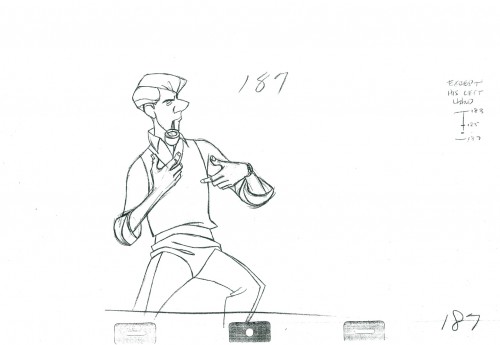 187
187
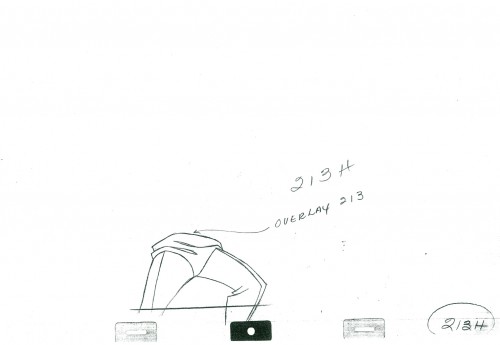 213H
213H
The legs move to their own level at this point.
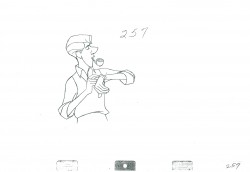
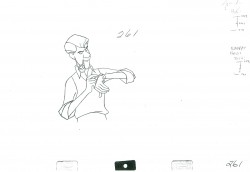
A drawing is skipped here (to be inbetweened.)
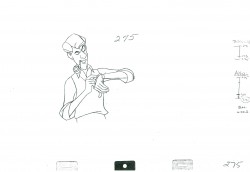
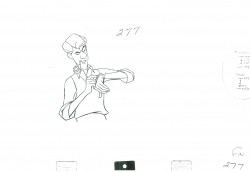
A drawing is skipped, needs inbetweening.
______________________
The following QT includes the entire sequence
which includes all drawings posted.
The registration is a bit loose. Sorry but, these are copies of
copies and there’s plenty of shrinkage.
If you click on the right side of the lower bar
you can watch it one frame at a time.
.
For more on 101 Dalmatians check out the animator drafts on Hans Perk‘s great and resourceful site, A Film LA. Hans has also posted Bill Peet‘s story treatment for the film several years ago. See it here.
For a look at the art direction of the film including some beautiful reconstructions of the BGs as well as some of the BG layouts go to Hans Bacher‘s great site One1More2Time3.
Andreas Deja has one of the more extraordinary blogs to visit. He just posted some beautiful drawings by some of the key animators on 101 Dalmatians as they set about to find the characters. See them here as well as a comparison of Milt Kahl‘s characters against Bill Peet‘s version. here
For those who own Fraser MacLean‘s excellent book, Setting the Scene, you’ll know that on pages 182-188 there’s an extensive discussion of this opening sequence from the film with plenty of beautiful images of the set.
Books &Commentary 03 Nov 2011 06:58 am
Dad’s Daughter’s book – an Overdue Review
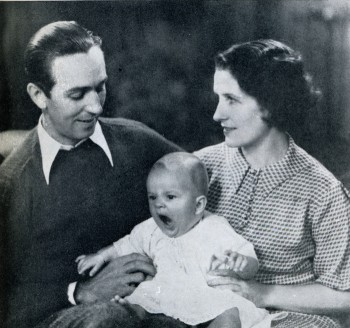 - I haven’t read the book, The Story of Walt Disney by Diane Disney Miller “as told to Pete Martin“, since it was originally published in 1957. Actually, I probably read the version that was serialized in the Saturday Evening Post in November 1956; then I most likely asked for a copy of the book for a Christmas present and read it then. After all, I was only 11.
- I haven’t read the book, The Story of Walt Disney by Diane Disney Miller “as told to Pete Martin“, since it was originally published in 1957. Actually, I probably read the version that was serialized in the Saturday Evening Post in November 1956; then I most likely asked for a copy of the book for a Christmas present and read it then. After all, I was only 11.
I remember being grabbed by the book and hooked for all time on animation. Two years later, the Bob Thomas Art of Animation would lock it up for me.
The Story of Walt Disney is an odd book to review. I wonder how much actual research went into the writing. Was it enough to have the source, Walt Disney, reveal his story verbally to Diane and Pete Miller? The voice undoubtedly comes through. The book comes off as one for youngsters; there’s an innocence in the writing that Pete Miller obviously got across. He did the writing; the book is labelled “by Diane Disney Miller as told to Pete Martin.” Martin was a writer for The Saturday Evening Post, where the book was serialized prior to its publication. Miller was also known for having collaborated with Bing Crosby on a book of memoirs before working on this Disney book.
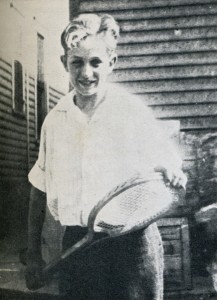 Since this book is essentially out of the mouth of Walt, we have to pay attention to some of the stories being told. What was told and what was skipped?
Since this book is essentially out of the mouth of Walt, we have to pay attention to some of the stories being told. What was told and what was skipped?
There’s quite a bit more than usual about the Red Cross service Disney did at the end of WWI.
The “Alice” series is called by the title “Alice in Cartoonland.” Unfortunately, the Disney brothers called the series the “Alice Comedies.” Even though their first short was known as “Alice’s Wonderland,” they didn’t refer to the others with any reference to Lewis Carroll’s work. That may well have been the demand of the distributor Charles Mintz even though the Disneys may have thought of the series as “Alice in Cartoonland.” Obviously, Walt referred to it as that title in telling this story.
There’s a mention of Ub Iwerks when Walt asked him to move out to LA, but there’s no mention of his name when Iwerks left Disney to open his own studio under the assistance of Pat Powers. There’s some detail in the chapter about Snow White, but barely a mention of Pinocchio or Bambi. Lots to tell about Fantasia and a bit more about Dumbo. No mention
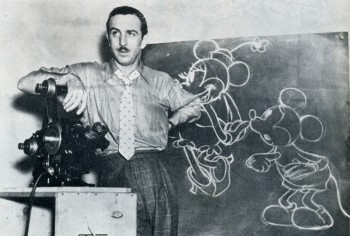 of Song of the South, Fun and Fancy Free or So Dear to My Heart, but Cinderella gets attention as do the documentary nature films. There’s an odd telling of the Disney strike in this book, and the suggestion of how the South American trip came about. In truth, the book becomes more about the juggling of money once Snow White goes into production and less about the actual films. There’s plenty of detail about going public with the stock options, and there’s a lot of detail about the government work done during WWII.
of Song of the South, Fun and Fancy Free or So Dear to My Heart, but Cinderella gets attention as do the documentary nature films. There’s an odd telling of the Disney strike in this book, and the suggestion of how the South American trip came about. In truth, the book becomes more about the juggling of money once Snow White goes into production and less about the actual films. There’s plenty of detail about going public with the stock options, and there’s a lot of detail about the government work done during WWII.
An interesting sentence comes at the beginning of the book when we read about the farm in Marcelline in hs childhood. “He can still draw a mental – or rather a sentimental – map of that whole community exactly as it was then.” This is a rare sentence by Diane commenting on her father’s recollections, and one wishes there were more like it. The last chapter of the book offers a bit more of this when Diane decides to tell a bit more about her father away from the office. What he likes to eat, how he acts, etc. There’s a lot of personality in this chapter.
One wonders how useful this book is for actual animation historians. Mike Barrier and John Canemaker have obviously read it, but do they trust the material? And why shouldn’t they, especially if there’s a second source for any of it. The story as a whole is very readable, and one rolls along easily in the telling of the tale. It’s especially entertaining. Obviously, the goal was to make the story for the largest possible audience, so details of the films were less interesting than the struggles of the imaginative entrepreneur.
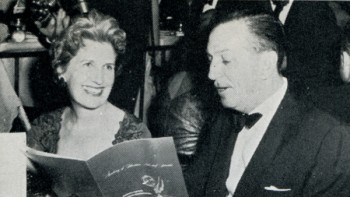 You know that “dad” enjoyed telling his daughter of all his accomplishments. So this is his version, and it’s interesting how it comes out filtered through the voices of Diane and Pete Miller. Diane’s pride in the studio is certainly as great as Walt’s.
You know that “dad” enjoyed telling his daughter of all his accomplishments. So this is his version, and it’s interesting how it comes out filtered through the voices of Diane and Pete Miller. Diane’s pride in the studio is certainly as great as Walt’s.
- “Father did the outlines of the drawings. The other two filled them in. Gradually Father gave them bigger assignments, until they were doing whole scenes themselves. Even then Father insisted upon a distinctive Disney style of drawing and photography, and he trained his two helpers to do things his way.
.
“They weren’t the only ones who have conformed to the Disney style. Almost all animated techniques since have conformed to the basic formulas that emerged from that primitive studio. Although they may vary in spirit, or another cartoon maker’s conception of what gives greater pictorial impact may differ from Father’s, they all owe a debt that goes back to the inventiveness and experimentation that went on in the back room of that converted real estate office.”
That sense of pride is understandable.
The Story of Walt Disney is actually a good read if you have a copy and haven’t seen it in years. Or you might be able to locate a copy in the library. Take the time; it moves quickly and is fun.
Commentary 04 Oct 2011 06:39 am
Hubley/Blair
- Two shows are about to take place; one in New York (Monday October 10th An Academy Salute to John Hubley), another in Los Angeles (Thursday October 20th, Mary Blair’s World of Color; A Centennial Tribute). I wish I could attend bothh of them; I’m happy to be in NY to attend the John Hubley program (and be a small part of it.)
Interesting that these two shows appear in the same month at two different AMPAS stations. Yet, the two artists couldn’t be more diametrically opposed in their work. One was more of an illustrator, albeit a brilliant illustrator, and the other was more a fine artist.
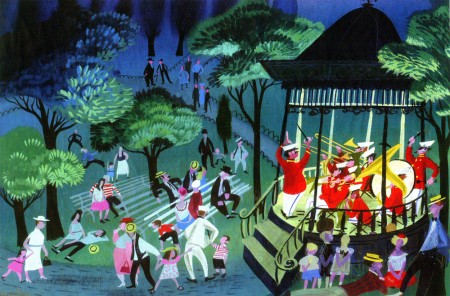
.
Everything about Blair’s work, from The Little Golden Books to the designs for the Disney features of the early 50′s to the overall design for It’s a Small World in Disneyland, are all glorious testaments to a first rate, gifted illustrator of the highest caliber. She radically changed her style on the trip to South America with the Disney group, and she brought these brilliant color mixes back with her to the work she did at Disney. The colors were almost there for the sake of the colors, alone. The work developed and grew more sophisticated with all that she did, and her color schemes became more radical as she designed for the Disney features.
.
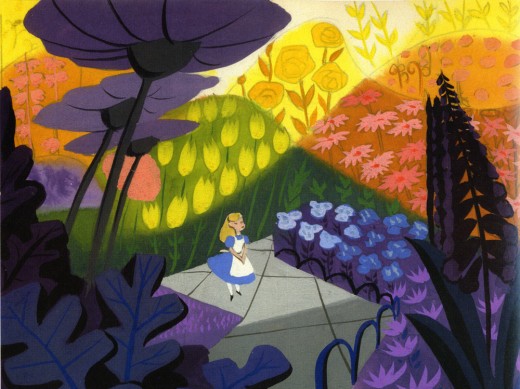
.
The grand statement of the art . . . well, there was no grand statement. It was done to further the films or the projects, and had no message. It was beautiful production art, but it was not really “Art.”
.
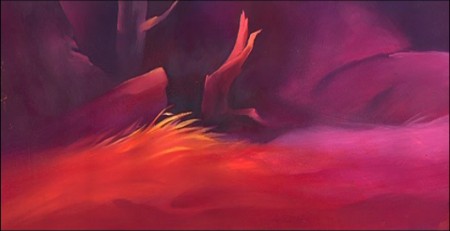
.
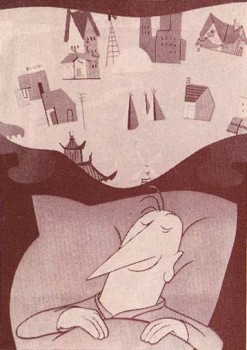 Hubley’s work sought to create art, and the style and growth continued upward through his years. The work at Disney’s studio started as gifted illustration (Snow White), then turned to a looser feel with oils (Pinocchio) and watercolor (Bambi). As he moved to UPA, the art followed Steinberg and Picasso closer to the world of abstraction. Ultimately, with Adventures of an * and films that followed (done by and for himself and his wife Faith) the Abstract Expressionists ruled, and Hubley’s art went far into that direction and stayed there through most of his films.
Hubley’s work sought to create art, and the style and growth continued upward through his years. The work at Disney’s studio started as gifted illustration (Snow White), then turned to a looser feel with oils (Pinocchio) and watercolor (Bambi). As he moved to UPA, the art followed Steinberg and Picasso closer to the world of abstraction. Ultimately, with Adventures of an * and films that followed (done by and for himself and his wife Faith) the Abstract Expressionists ruled, and Hubley’s art went far into that direction and stayed there through most of his films..
Tender Game, which followed Adventures of, was a variation that seemed to emulate some of the work of Baziotes. Moonbird was where Hubley came into his own and created a very rich style that was all his own. Variations on it came with The Hat, The Hole and Of Stars and Men. A new direction came with Windy Day. By the time we reached Cockaboody, a softness settled into that very same style and watercolor backgrounds dominated. There was throughout all this work a beautiful development where one phase grew out of another which had grown out of another.
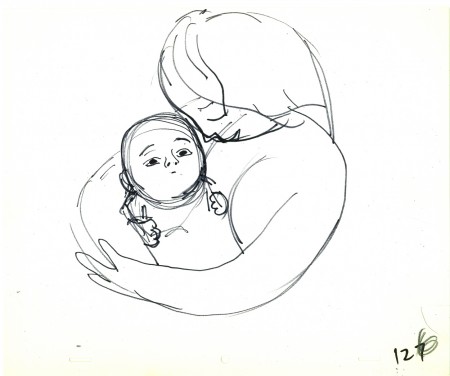
.
And there was a grand statement: all art, abstract or realistic was an abstraction and it touched all of our lives regardless of our thoughts about it. Picasso could be dismissed by those not in the know, but eventually the masses would warm up to him and eventually take it for granted that this, too, was Art. Hubley helped make that world – this world – so. Acceptance and understanding was part of his oeuvre.
.
One wonders if Hubley had remained at Disney’s as long as Blair had whether any of his rich design style would have controlled the films as her work had. Of course, the answer is obvious. He never would have been able to remain at Disney’s studio. His penchant for the further development of the art – out of the 19th century illustration – would not have allowed him to sit still there. By leaving, he not only pushed his own work into a higher realm, but he pulled animation there with him.
.
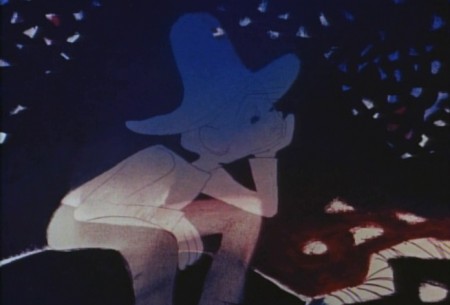
.
In a sense, without his work, animation would still be stuck in the 19th Century graphics and would not have moved into the 21st Century. We can see evidence of this with all the cgi features being done today. Those little fabricated computerized puppets are wholly stuck in 19th Century art, yet 2D has moved on. We accept “Beavis & Butthead” or “Aqua Teen Hunger Force” (both badly drawn works that are most definitely 21st century graphics) because Hubley changed things. Not that John Hubley was the only one who wanted to do more, graphically, in animation, but others seem content with modernized cartooning. Chuck Jones, for example, who led the way in 1941 settled into a stylized cartooning in the 1950s. Hubley sought art – something different and deeper than was acceptable to others.
Picasso led to acceptance of Andy Warhol and Robert Rauschenberg; Hubley led to acceptance of “South Park” and Yurij Norshtein.
.
Pictures:
1. Mary Blair – personal painting
2. Mary Blair – Alice In Wonderland
3. John Hubley – Bambi
4. John Hubley – Brotherhood of Man
5. John Hubley – Everbody Rides the Carousel
6. John Hubley – Moonbird
Articles on Animation &Disney &Music 13 Sep 2011 06:39 am
Bambi’s Music – recap
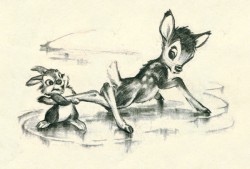 - I first met Ross Care years ago. He had scored the music to one of John Canemaker‘s early short films, The Wizard’s Son. I was impressed, and since I was looking for a composer for the first film of my new company, Byron Blackbear & The Scientific Method, I asked Ross for his help. He did a great job with little time and less money.
- I first met Ross Care years ago. He had scored the music to one of John Canemaker‘s early short films, The Wizard’s Son. I was impressed, and since I was looking for a composer for the first film of my new company, Byron Blackbear & The Scientific Method, I asked Ross for his help. He did a great job with little time and less money.
It was only a short time later, that I learned that Ross was an animation music historian. Somehow, we worked together in setting up a program for ASIFA East in which the conductor for Bambi, Alexander Steinert, took the stage with Ross to analyze the music for that film. I had a 16mm print of the film, and we watched about half of it. It was one of those memorable ASIFA meetings, that stay with you forever.
A year or two later, Ross had written an extensive article on Bambi’s music for The Quarterly Journal of The Library of Congress, the Spring 1983 edition. I just recently ran into the article on my shelves, and after getting Ross’ permission, I’m posting that article here.
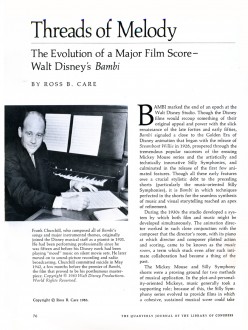 _
_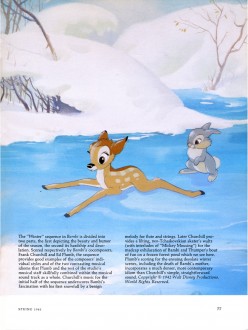 2
2___________(Click any image to enlarge to a readable size.)
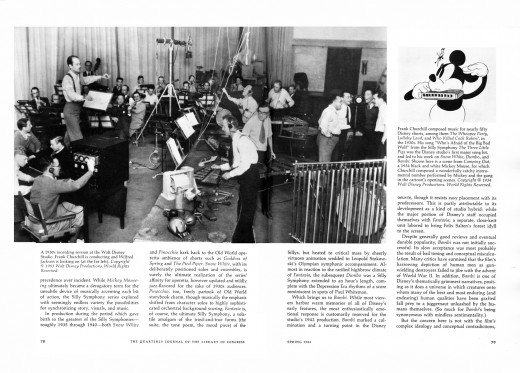 4
_
4
_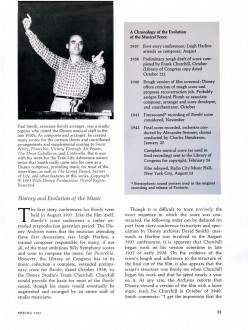 6
6
Article: Copyright © 1983 Ross B. Care
Books 30 Aug 2011 07:26 am
Overdue Book Review – Tom Sito’s Drawing the Line
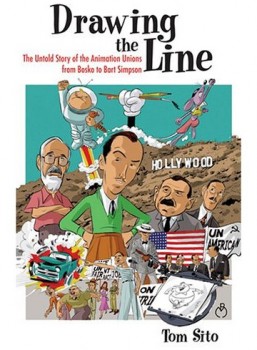 - There are a number of books I have been remiss about reviewing. For different reasons I’ve not been able to get to reading or reviewing or even commenting on several excellent books. I’ve decided to try to catch up with some of the more important ones.
- There are a number of books I have been remiss about reviewing. For different reasons I’ve not been able to get to reading or reviewing or even commenting on several excellent books. I’ve decided to try to catch up with some of the more important ones.
Note: I also have a problem with WordPress I am having difficulty resolving. It won’t allow me to save any post that has the word “u-nion” in it. I have to add the hyphen to get by with it. Since this book is about u-nions, please expect and forgive a lot of hyphens.
- Tom Sito‘s excellent book, Drawing the Line, is, to me, something of an important book. Other than Karl Cohen’s 1997 book, Forbidden Animation: Censored Cartoons and Blacklisted Animators in America, this is the only book to talk in depth about the Hollywood labor problems and the effect of the McCarthy-era blacklisting on animation. The politics of the different periods is crucial to the subject, and Tom Sito takes that in with ease clearly addressing the subject at hand.
My favorite chapter of the book comes at the beginning. Tom Sito has a charm and a wit in his style, and it comes across most abundantly here. He details lots and lots of small injustices the bosses have against the labor force. It’s all told with such humor, that it takes a while for the heinous conditions being described to be driven home.
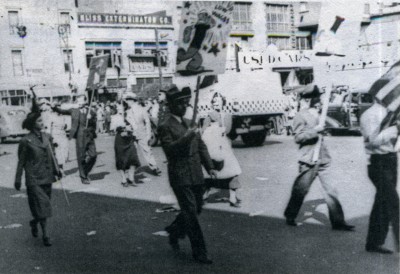 I imagine it was no mean feat to give both a history of animation, for those who are unfamiliar with it, and, at the same time, to go into depth with very specific data that breaks down the conditions and the actions that caused the strikes. There are three attempts at
I imagine it was no mean feat to give both a history of animation, for those who are unfamiliar with it, and, at the same time, to go into depth with very specific data that breaks down the conditions and the actions that caused the strikes. There are three attempts at
u-nionizing analyzed with detail within the book. _____ Fleischer strikers in front of the Fleischer studio, NYC, 1937. *
Smaller actions like
the Van Buren and Schlesinger studio strikes are dealt with in short order. The Fleischer, Disney, and Terrytoons strikes take whole chapters to review. All three created enormously heavy feelings felt by the participants even to the end of the century, though the actions had happened more than fifty years earlier. I’d witnessed conversations with members who were holding angry grudges against other members, whether because they had been scabs or had been participants in the u-nion organizing. Sito’s book gives clear descriptions of this and the reasons that caused the friction.
The Blacklist and the Hollywood Wars are likewise detailed and broken down in specifics. Though I’d had an interest in this period of animation history some of the book’s stats are new to me. I also like Sito’s discussion of the aftermath of the period – an anti-political wave that kept people from speaking their mind about their politics. It seems like a simple observation, but it’s obvious only after it’s relayed.
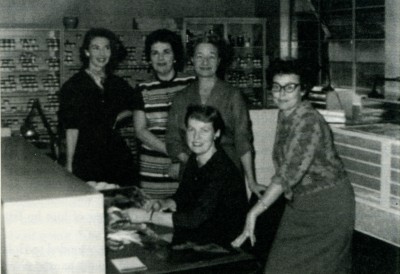 My second favored chapter comes as the book goes in the second half. “Lost Generations” sees into the latter half of the Twentieth Century after the “Big Five” studios have been u-nionized. Here we look into smaller studios from Clampett to Jay Ward to Ralph Bakshi. Depatie-Freleng to Chuck Jones. We see how a ___ LtoR: Sylvia Cobb, unknown, Mary Tebb, Phyllis Craig (seated)later generation of ________and Ann Lord. Ink & Paint women at Disney, 1957.*
My second favored chapter comes as the book goes in the second half. “Lost Generations” sees into the latter half of the Twentieth Century after the “Big Five” studios have been u-nionized. Here we look into smaller studios from Clampett to Jay Ward to Ralph Bakshi. Depatie-Freleng to Chuck Jones. We see how a ___ LtoR: Sylvia Cobb, unknown, Mary Tebb, Phyllis Craig (seated)later generation of ________and Ann Lord. Ink & Paint women at Disney, 1957.*
artists have less of a
connection to the u-nion, and this sets us up for the big chapter, “Animation and the Global Market.” Here we see the mega-money step in and just about wipe the art off the face of animation. We see how the employees turn on their own u-nion and allow the studios to hae the upper hand. As Don Bluth moves to Ireland for financial incentives with lower salaries and Steven Spielberg settles in London to make his lower budget features. Disney sets up studios in Australia and Canada to produce low budget feature sequels and reap in high grosses at the box office. (Just today I saw a TV ad for the “Special edition” of Bambi II, years after its production. If only the film were “Special.”) Tom Sito is intimately involved in this chapter having been part of the picketing work force, and you can feel it in the writing. It feels personal.
Since he had been President of Local 839 for a while, I would have expected him to be partial to the u-nion but was pleased to see a very fair view showing both sides of the u-nion’s history – positive and negative. It’s an engrossing book, and I’m sorry I didn’t turn to it earlier.
The one negative I had with the book were the many niggling little errors throughout. Some examples include:
- pg 17 says: “Ub Iwerks, working alone, animated Walt Disney’s 1929 short The Skeleton Dance.” In fact, it was Plane Crazy that Iwerks animated alone with only some small assistance from Ben Clopton. In fact, Les Clark took particular pride in animating a scene of a skeleton playing the ribs of another skeleton as if it were a xylophone
- pg 26 reads: “Mary Blair had once been called by Walt Disney ‘the best artist in the studio.’ Within a year of Walt’s death she had resigned, perhaps as a result of professional jealousy of a woman with that much importance.” In fact, Mary Blair had resigned from the studio in 1953, even before Peter Pan, a film she had designed, had been released. She came back to work with Disney on designing a couple of exhibits for the NY World’s Fair and then supervised their move to Disneyland. She was devastated by the death of Disney and left several years later. Her problems with alcohol probably had more to do with the retirement than any “professional jealousy of a woman with that much importance.”
- pg 156 calls Bill Walsh the new president of IATSE. (I was curious to know if this was the same producer who worked at Disney for many years.) No, we learn on page 158 that it’s RICHARD Walsh who is the president of IATSE.
- Page 211 goes from calling William Weiss, Bill Weiss to Bob Weiss and back again.
I also was a bit annoyed with the Index which does not list quite a few names. Mary Blair, who is mentioned at least half a dozen times doesn’t get in the Index, nor does Preston Blair. Rudolph Ising and Hugh Harman don’t make it either, Bill Walsh (who is really Dick Walsh) gets listed on pg 156 & 202, although that name is Dick Walsh on 202. I stopped looking at the Index pretty quickly.
There are many other errors like this, though all of the large and detailed, specific data about the strikes and u-nions seems accurate. This book which is filled to the brim with facts dates and figures obviously has most of them correct. Perhaps the book’s copy editor should have been more questioning.
This is a strong book, and if you haven’t already read it, I have to encourage you to do so. It’s a very particular history, and it has a lot to offer that isn’t available in other animation history books.
- Tom Sito has also authored several other books:
- He is the author of the revised version of my favorite “how to” animation book, Timing for Animation. It was originally written by Harold Whitaker with John Halas attaching his name (he probably got the publisher and not much more). Tom updated the book to include the cgi world. (To be honest, I haven’t seen the book; I only know the original – very well. Consequently, I have a hard time saying much about the revised version.)
He also has co-authored with Kyle Clark. Inspired 3D Character Animation is designed to show how to put Character into 3D animation and not just set key frames.
* picture 1 courtesy of MPSC Local 839, AFL-CIO Collection, Urban Archives Center, Cal State Univ., Northridge
* picture 2 courtesy of Anne Guenther and Archives of the Animation Guild, Local 839, North Hollywood.
Animation &Books 09 Jul 2011 07:12 am
Tytla, Celestri, Anik and Eric Larsen
- Mark Sonntag just sent me a model sheet from The Hungry Wolf that he found on auction at Howard Lowery’s. There’s no way to tell if these drawings are by Tytla, but the drawing is beautiful just the same. The inclination to shade in the characters on this film is interesting, though. Many thanks to Mark for sharing.
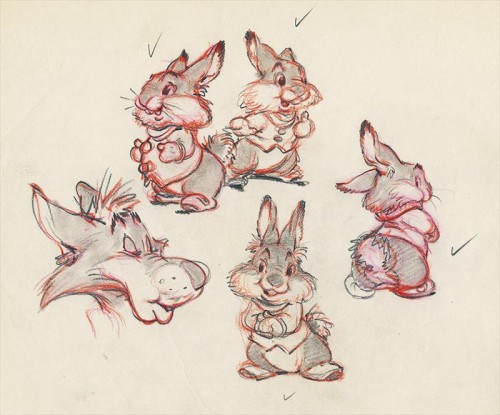
______________________________
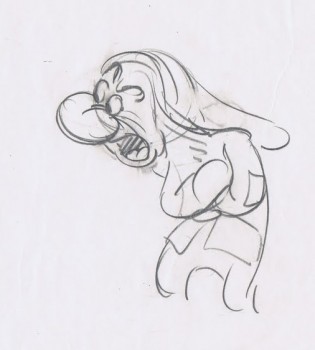 - I am such a fan of Bill Tytla‘s work, I can’t even begin to tell you how much. This week, on his blog, Andreas Deja posted some roughs by Tytla and I couldn’t believe how wonderful some of those drawings are.
- I am such a fan of Bill Tytla‘s work, I can’t even begin to tell you how much. This week, on his blog, Andreas Deja posted some roughs by Tytla and I couldn’t believe how wonderful some of those drawings are.
There’s a series of Grumpy posing in the middle of one of his negative rants, that just sends me. I’ve gone back to the blog at least a dozen times to look at those drawings again and again. The character starts by throwing all of his hostility out to whomever he’s talking to. Then he crosses his arms, with back to the listener. That immediately has him reach out to that person with his entire body, even though his arms stay crossed. It’s such a wonderful mix of emotions so beautifully and graphically presented. All the emotion within Grumpy is out on the floor; he thinks he has nothing to hide and is letting it all out. Thanks to Tytla, we see that Grumpy wants to be like all the others and love Snow White as well. He’s so conflicted and trying so hard not to be honest. This is a brilliant animator at the top of his game.
In the past, I’ve posted quite a few Tytla drawings – most of them loaned to me by John Canemaker. I think in the next week or two I’m going to pull out many of them for a recap. They’re just too great to sit hiding in the morgue of my blog. I want to take another look at them, and maybe share that, again, with you. I hope you’ll indulge my obsession.
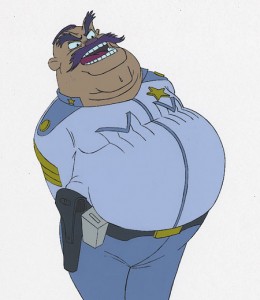 - John Celestri is a very good animator who has been a fan of Tytla’s work since I first met him back in 1977 on Raggedy Ann & Andy. John was in the NY Assistant pool that I supervised, and he was a talent to reckon with. Now, John has a new blog that is starting to take shape. It’s like many animator/director blogs in that it’s built around his work in the industry, and there’s a lot of experience for him to draw on. After he left Raggedy Ann, John moved onto Tubby the TUba at NYIT, then Nelvana to work on Rock & Rule. From there he worked on many features in LA, some with Richard Rich‘s studio for Nest Animation. In every step forward, John’s animation kept getting stronger. Now he has his own studio in Kentucky.
- John Celestri is a very good animator who has been a fan of Tytla’s work since I first met him back in 1977 on Raggedy Ann & Andy. John was in the NY Assistant pool that I supervised, and he was a talent to reckon with. Now, John has a new blog that is starting to take shape. It’s like many animator/director blogs in that it’s built around his work in the industry, and there’s a lot of experience for him to draw on. After he left Raggedy Ann, John moved onto Tubby the TUba at NYIT, then Nelvana to work on Rock & Rule. From there he worked on many features in LA, some with Richard Rich‘s studio for Nest Animation. In every step forward, John’s animation kept getting stronger. Now he has his own studio in Kentucky.
The blog, at present, uses John’s own work to show basic animation techniques and script writing problems. It’s growing up into something quite interesting, and I suggest you check it out, if you haven’t already.
By the way, I love that John has pursued a completely non-animation, secondary path in his life. He has also authored quite a few mystery novels with his wife, Cathie. (Their joint site is called CathieJohn.)
- Also worth visiting is the studio site for Dancing Line Productions. This is the animation company of Anik Rosenblum, a Vancouver, Canada animator who brings a lot of grace and lyricism to the animation he’s been doing for some beautiful spots. There are many examples of his work on the site, and you should take a look at some of it.
Below is an animated piece called “The Autumnal Walk” which gives a good idea of Anik’s work.
The Autumnal Walk
This is one of my favorite pages of Dancing Line’s site. It answers the question, “Why hire us?” Anik has a good, sweet sense of humor. More power to him; I hope his company is successful.
- I just read an interview with Eric Larsen in Don Peri‘s book, Working with Walt. Something Eric said caught me and I thought it would be good to quote him:
- When I came into this business, Frank [Thomas] and Ollie [Johnston] and Marc Davis and Ward Kimball and John Lounsbery all came about the same time. Hal King and a few more came then, too. There was a group of us who developed, and Walt started putting a certain’ amount of responsibility on us in a way. But we came through what we called me unit system: each one of us came up through a very strong animator. These are the men I spoke of a little while ago when I said that here were such great talents and yet they opened up their arms to you to let you have everything they had: Ham Luske, Norm Ferguson, Bill Roberts, Wilfred Jackson, Ben Sharpsteen, Freddy Moore, and then just a little bit later Bill Tytla. Good gosh, what more could you ask for! We came up under those men, being taught, you might say, with them looking over our shoulders. A number of years ago, we dissolved the unit system. Don’t ask me why because I can’t answer. It’s the biggest mistake we made. Now we are trying to set up units again. Like on Bambi, I had ten animators plus all their assistants
working with me. I spent most of my time up here in this room and then would go down and animate at night. But you could keep control of certain things. You learn by working with somebody who has gone I tough the mill. But you’re always learning. There’s no such thing as I graduation in an animation class.
Basically, Eric Larsen is saying that only by our working together can we advance the art of Animation. That’s true. But I wonder if we do that anymore. I wonder if we’re open to each other to try to help out. I hope so. I hope all these new sites, such as John Celestri’s site, help to impart some tidbit of knowledge to someone coming up. It’d be great if it does.
Commentary &Disney 18 Jun 2011 07:34 am
Sight Seeing
- This past week Jonna commented on this blog: I can only imagine how it would have been to see one of the classics at a theater (I was born in the 90’s). It would have been great fun if any of you told about a premiere or screening that you’ve attended (e.g. the first time you saw Sleeping Beauty or something).
So I thought of a couple of memories I have of seeing some of the classic Disney films theatrically for the first time. So kiddies gather round Gran’pa while he tells you a story.
 The first film I’d ever seen was Bambi. I don’t remember much about it, but I’m sure that the experience permeated my brain and sent me on a direction I could never return from. This is still one of my favorite classic Disney films. I’m not big on the cutesy aspects of the movie – specifically the “twitterpated” sequence, but I am big on everything else. Back in those days, there were often Surprise guests coming to the movie theaters to promote the shows. At this one particular event, to celebrate Christmas they drew back the curtain and had a pile of large gifts all wrapped in foil-colored gift wrap. Clarabelle the clown from the Howdy Doody Show was a special guest who was going to give out gifts to the boys and girls in the audience. He went through a short routine which ended with the supposed gift-hand-out. But it didn’t happen that way. Clarabelle took out his bottle of seltzer and started spraying the audience. The blustered theater manager called for the curtain to be closed, and that was that. Even at the age of 4 or 5, I knew we was robbed. No wonder I couldn’t remember much about Bambi.
The first film I’d ever seen was Bambi. I don’t remember much about it, but I’m sure that the experience permeated my brain and sent me on a direction I could never return from. This is still one of my favorite classic Disney films. I’m not big on the cutesy aspects of the movie – specifically the “twitterpated” sequence, but I am big on everything else. Back in those days, there were often Surprise guests coming to the movie theaters to promote the shows. At this one particular event, to celebrate Christmas they drew back the curtain and had a pile of large gifts all wrapped in foil-colored gift wrap. Clarabelle the clown from the Howdy Doody Show was a special guest who was going to give out gifts to the boys and girls in the audience. He went through a short routine which ended with the supposed gift-hand-out. But it didn’t happen that way. Clarabelle took out his bottle of seltzer and started spraying the audience. The blustered theater manager called for the curtain to be closed, and that was that. Even at the age of 4 or 5, I knew we was robbed. No wonder I couldn’t remember much about Bambi.
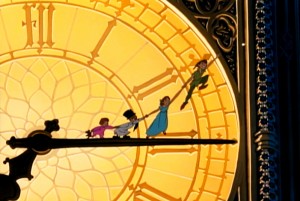 The second film I’d ever seen was Peter Pan. That would have been for the 1953 theatrical release. My father took me to one of those large movie palaces in upper Manhattan, the Loew’s 181st Street. I remember it playing with a film about a jungle cat of some kind; I’ve always remembered this as The Black Cat, but that title isn’t right. So I obviously don’t remember the title of the film, a B&W scary movie.
The second film I’d ever seen was Peter Pan. That would have been for the 1953 theatrical release. My father took me to one of those large movie palaces in upper Manhattan, the Loew’s 181st Street. I remember it playing with a film about a jungle cat of some kind; I’ve always remembered this as The Black Cat, but that title isn’t right. So I obviously don’t remember the title of the film, a B&W scary movie.
Re the animated feature, I remember most the swirls of color of Pan and gang flying; I don’t remember much else about it from that initial introduction. I was absolutely enamored with the moviegoing experience from The Black Cat to the brilliant cartoon. Remember, I was only 6 or 7 years old, at the time.
In 1955, I was in charge of about five kids (a couple of siblings and a couple of cousins) going to a local theater to see the NY premiere of Lady and the Tramp. Back then, it would cost 25 cents for a kid to get into the movies. When we’d gotten to the local movie theater for this film, they’d raised the price to 35 cents – more than our parents had allotted.
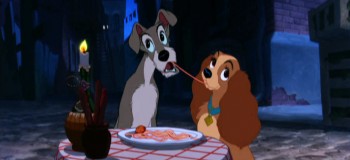 Outside the theater we were counting up our monies and trying to figure out how much we’d need to get in and buy some candy or popcorn for all of us. Within seconds my cousin announced that she’d lost her money, and it was obvious there wasn’t going to be enough for refreshments. The cousin started crying loudly, bawling until the movie theater manager came up to ask what was the problem. She spluttered out the word that she couldn’t afford any candy now that she’d lost the money to get into the movie. The manager just reached into his pocket and gave me an additional dollar. Enough money for movie and candy and more importantly it stopped my cousin’s screaming.
Outside the theater we were counting up our monies and trying to figure out how much we’d need to get in and buy some candy or popcorn for all of us. Within seconds my cousin announced that she’d lost her money, and it was obvious there wasn’t going to be enough for refreshments. The cousin started crying loudly, bawling until the movie theater manager came up to ask what was the problem. She spluttered out the word that she couldn’t afford any candy now that she’d lost the money to get into the movie. The manager just reached into his pocket and gave me an additional dollar. Enough money for movie and candy and more importantly it stopped my cousin’s screaming.
Once inside the theater I ignored them – even though the cousins were badly behaved and squirmed about through most of the show. I liked the film so much that I made the whole group sit with me to watch it a second time. That big, wide Cinemascope screen. It was heaven.
We did this often back then. I remember another time going to see Pinocchio with my younger sister, Christine. We sat through Pinocchio three times before we left the movie theater. That meant we had to sit through the second feature (usually some live action dud) twice to get to the third showing of the cartoon. My sister reminds me often enough that when she turned around she’d seen that the theater was empty except for the two of us. The usher stood in the back giving us the evil eye.
Prior to Sleeping Beauty‘s release, I’d been doing some reading. I’d received Bob Thomas’ The Art of Animation the previous Christmas, and I read it over and over at least a hundred times. I memorized every still in that book and couldn’t wait to get my eyes on Sleeping Beauty.
The film opened at Radio City Music Hall, and I was given permission to make one of my first trips downtown to see the film. An hour subway ride for a 12 year old. I went into this largest of movie theaters in the City, and I picked a great seat. The audience wasn’t overflowing; the show wasn’t sold out. But it was BIG.
The screen is enormous in that theater, and Sleeping Beauty was made to fill such a screen, especially in its Technirama debut. But somehow I came out of the theater disappointed. I don’t know what had gotten into me. I don’t remember any reason for disliking it. As a matter of fact, I absolutely love the film now. Those Eyvind Earle settings; the great animation of Maleficent; the dragon fight. There’s just a million reasons I have for loving it, but something about that first viewing left me cold. And I remember trying to analyze, at the time, what I thought was missing from the experience. I had no answer.
I’ve seen all of the pre-cgi Disney films in theaters. I also remember all the experiences of sitting through them. Dumbo and Alice In Wonderland were the only two that I saw on TV first. They were both special presentations on the Disneyland show. Eventually, I’d see them both in theaters at special screenings.
Of all of them, Dumbo still stands as my favorite though in a close tie to Snow White. There’s something they both have that goes beyond the brilliant animation and the graphics on screen. There’s an emotion there that they both have, not quite an innocence but more like a daring. Without consciously saying it, you felt the Disney people were shouting, “Look what we can do!” And they did do it. (By the time they did Fantasia, they were too conscious of what they could and had done, and they’d lost it – for me.)
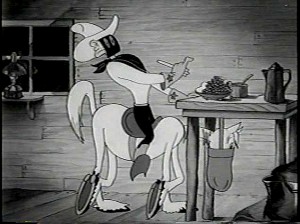 Eddie Fitzgerald is either a genius or a real-life looney toon – who I treasure. Probably, I think both; he’s at least an original. His blog is like no other in that he gives us real deep rooted comedy that makes you laugh aloud. He puts together these photo-montage storyboards creating a wacky movie that you just gotta keep reading, and when he’s on the mark, there’s nothing short of brilliance.
Eddie Fitzgerald is either a genius or a real-life looney toon – who I treasure. Probably, I think both; he’s at least an original. His blog is like no other in that he gives us real deep rooted comedy that makes you laugh aloud. He puts together these photo-montage storyboards creating a wacky movie that you just gotta keep reading, and when he’s on the mark, there’s nothing short of brilliance.
Bob Clampett did a wacky WB short called The Lone Stranger and Porky. Obviously, it was a parody of the big radio show of the time, The Lone Ranger. Well, Eddie takes off on that parody and does Clampett one better. It’s crazy and hilarious and you have to check it out (if you haven’t already.) The Lone Stranger (Parody) via photomontage.
Someone should finance this guy to make a real movie. This artwork would take cgi in a direction that hasn’t been considered before. Maybe then they’d have the first REAL animated cgi film instead of all these cutesy viewmaster things we get.
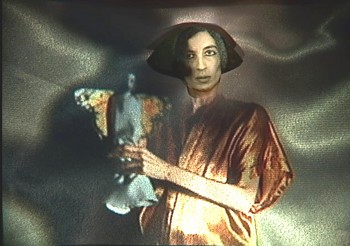 Last week I started a new series that I hope will go on forever. I’ve been interviewing Independent animators, the ones who are trying to make artful animation on their own. They don’t have the dollars that a Dreamworks would, but they’re using all of their resources to make movies that have something to say.
Last week I started a new series that I hope will go on forever. I’ve been interviewing Independent animators, the ones who are trying to make artful animation on their own. They don’t have the dollars that a Dreamworks would, but they’re using all of their resources to make movies that have something to say.
The first post was an interview with George Griffin, who has been something of an inspiration to me. Upcoming this Tuesday will be an in depth look at the amazing career of Kathy Rose. She takes animation, mixes it with dance and Performance Art and comes out with amazingly original work. I’m having a good time putting these pieces together, and there are so many who deserve the attention.
- I have one last bit of self-aggrandizement to post. THis coming Wednesday, June 22nd, HBO will premiere the latest Special we’ve done for them. (Notice how I date myself by calling it a “Special”. That’s what they were called when I was younger. These days I only know the industry word for them, “one offs”. I don’t like to think of my show as a “one off”; it’s a Special.)
The show is about half animated; the other half consists of kids saying the wackiest things. It’s fun. So there you go.
